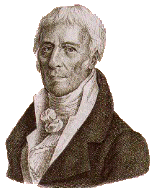 Featured
Scientist: Jean Baptiste de Lamarck
Featured
Scientist: Jean Baptiste de Lamarck
Notes for Understanding Evolution - Chapter 1
Click link to return to Biology
409 Schedule
or ahead to Chapter 2
The following lecture notes will use
the following conventions:
Clicking on web links is "optional"
but they will help illustrate
points made
in lecture and by the authors of your text
The web is very visual, links will
help you visualize
I expect you to read the entire
assigned chapster in the text
unless I indicate
particular assigned pages, e.g.,
Ch.
1: 1-10 (in this case, the entire chapter)
Review questions (RQ)
refer to those corresponding to a
chapter, for
example, RQ1:1 is the first review question
for Chapter
1.
Certain boldface text terms will
be featured as Key Terms
Certain animals will be a
Featured Animal
Certain events will be a Featured
Event
Certain people will
be a Featured Scientist
Links
are provided to corresponding parts of the PBS Website
Chapter 1 - Variation in Populations
Objectives:
a) What is distinction between environmental and genetic basis of observed phenotypic variation in population (Multi-leg bullfrog example)
b) How does one test for this difference?
c) In cases with genetic basis, what is expected phenotypic expression (i.e., for case of simple Mendelian recessive allele)
Introduction
I. Environmental Modification
Key Terms: teratogens (various substances that can cause environmental modification, not due to genetic makeup of the individual), expression of a gene vs. the gene itself
RQ1.1: Explain why a cross of two multilegged bullfrogs might provide valuable insight as to why such deformaties might exist.
II. Lamarckism
 Featured
Scientist: Jean Baptiste de Lamarck
Featured
Scientist: Jean Baptiste de Lamarck
Links: 1 - 2 - 3 - and especially 4 (Michael Ghiselin's excellent account of textbook falacies about what Lamarck said)
PBS Website Link
RQ1.2: Why does evolution depend on heritable variation?
III. Heritable Variation
Key Terms: allele, recessive vs. dominant allele, carrier (heterozygous for recessive deleterious allele, e.g., the one that when homozygous causes Ellis-van Creveld syndrome, due to a faulty protein produced by a gene on the short arm of human chromosome 4)
RQ1.3: In the bullfrog example, if the multi-leg condition did have a heritable component, why is it potentially significant that the multilegged frogs did not survive long enough to reproduce?
IV. Hypothetico-Deductive Reasoning
Key Terms: hypothesis, deduction, hypothetico-deductive style of reasoning, theory vs. "truth"
RQ1.4: Why do you think that, unlike physics, biology doesn't seem to have much in the way of laws?
Click link to return to Biology
409 Schedule
or ahead to Chapter 2
This page created 8/16/01 © D.J. Eernisse, Last Modified 1/30/03, Links Last Completely Checked 1/30/03